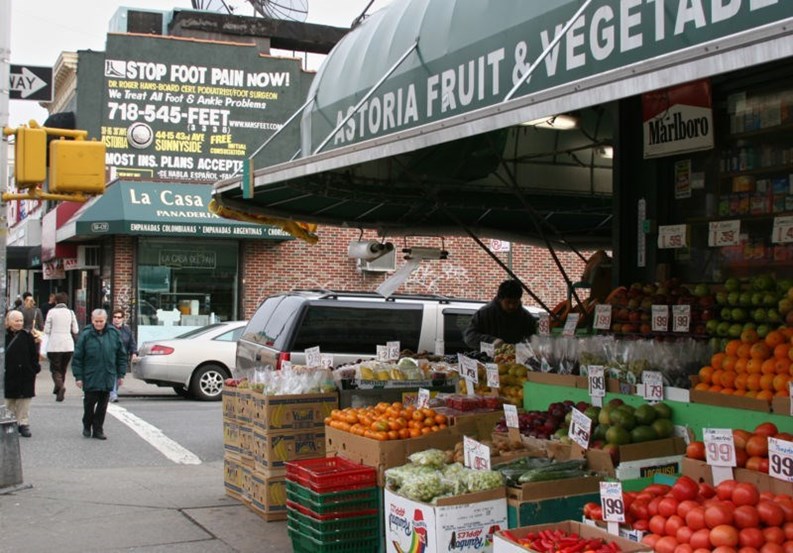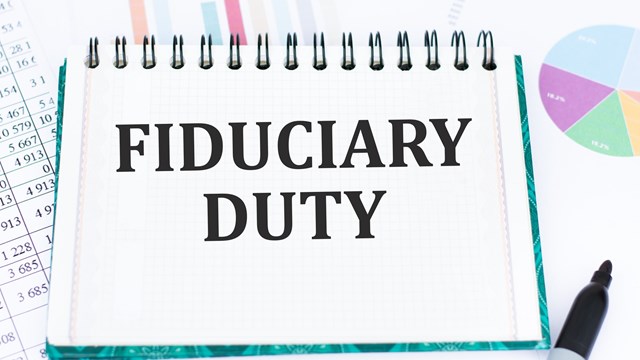Astoria is a neighborhood in the northwestern corner of Queens that is as diverse as the immigrants that settled there from places as far away as Greece, Italy, Ireland, Latin America, Asia, and the Middle East.
A Famous Ancestry
Originally named Hallet’s Cove after its first landowner William Hallet settled there in 1659 with his wife Elizabeth Fones, New Yorkers can probably figure out that Astoria was renamed after John Jacob Astor, then the richest man in America with a net worth of over $40 million. Astor was asked by founding father and fellow fur trader Stephen Halsey to invest $2,000 in the neighborhood in return for naming the area after him. He only invested $500, but the name stayed nonetheless, as a bitter battle over naming the village was finally won by Astor's supporters and friends.
Beginning in the early 19th century, affluent New Yorkers constructed large residences around 12th and 14th streets, an area that became known as Astoria Village (now Old Astoria). This area was a noted recreational destination and resort for Manhattan's wealthy elite. From Astor's summer home in Hell Gate, Manhattan—on what is now East 87th Street near York Avenue—he could see across the East River to the new Long Island village named in his honor. Astor, however, never actually set foot in Astoria.
Later History
Astoria was first settled by the Dutch and Germans in the 17th century. Many Irish settled in the area during the waves of Irish immigration into New York City during the 19th and early 20th centuries. During the second half of the 19th century, economic and commercial growth also brought increased immigration from German settlers, mostly furniture and cabinet makers.
One such settler was Heinrich Engelhard Steinweg, patriarch of the Steinway family who founded the worldwide piano company Steinway & Sons in 1853. Afterwards, the Steinways built a sawmill and a foundry, as well as a streetcar line. The family eventually established Steinway Village for their workers, a company town that provided school instruction in German as well as English.
In 1870, Astoria and several other surrounding villages, including Steinway, were incorporated into Long Island City. Long Island City remained an independent municipality until it was incorporated into New York City in 1898. The area's farms were turned into housing tracts and street grids to accommodate the growing number of residents.
Italians were the next significant immigrants in Astoria. Numerous Italian restaurants, delis, bakeries and pizza shops are found throughout Astoria, particularly in the popular Ditmars Boulevard area.
The 1960s saw a large number of ethnic Greeks from Greece, and Cyprus, giving Astoria the largest Greek population outside of Greece itself. The Greek cultural imprint can be seen in the numerous Greek restaurants, bakeries, tavernas and cafes, as well as several Greek Orthodox churches. While the population of Greeks in Astoria was 22,579 in 1980, it dropped to 18,127 by 1990 due to decreased immigration and lower birth rates. Many Greek organizations still exist there.
Beginning in the mid-1970s, the neighborhood's Arab population grew from earlier Lebanese immigrants to include people from Egypt, Tunisia, Yemen and Morocco. In the 1990s, Steinway Street between 28th Avenue and Astoria Boulevard saw the establishment of many Arabic shops, restaurants and cafes.
The next wave in Astoria was among South Americans and white European populations, including many Brazilians, who reside in the 36th Avenue area. Albanians, Bulgarians, and Bosnians have also shown a rise in numbers.
Demographics
Located in Community Board 1, Astoria is bounded by the East River and is adjacent to three other Queens neighborhoods: Long Island City, Sunnyside (bordering at Northern Boulevard), and Woodside (bordering at 50th Street). There is some debate as to what constitutes the geographic boundaries of Astoria. The neighborhood was part of Long Island City (LIC) prior to the latter's incorporation into New York City in 1898, and much of it is still classified as LIC by the U.S. Postal Service.
The area south of Astoria was called Ravenswood, and traditionally, Broadway was considered the border between the two. Today, however, many residents and businesses south of Broadway identify themselves as Astorians for convenience or status, since Long Island City has historically been considered an industrial area, and Ravenswood is now mostly a low-income neighborhood. Some of the thoroughfares have lent their names to unofficial terms for the areas they serve. For instance, the eastern end of Astoria, with Steinway Street as its main thoroughfare, is sometimes referred to simply as "Steinway," and the northern end around Ditmars Boulevard is sometimes referred to as “Ditmars.” Many condos have sprung up in Astoria, including ones on the site of the historic Eagle Electric company warehouse. Relatively new are the Ionian and the Astoria Windsor. Some of those early antebellum mansions survived too but Astoria is mostly a hodgepodge of six-family apartment houses and two- and three-family row houses, built after the bridges, tunnels and elevated trains of the 20th century put Astoria within easy commute of Manhattan.
Filmmaking Plays a Role
Astoria figures very prominently in early American filmmaking as one of its initial centers, a heritage preserved today by the American Museum of the Moving Image and Kaufmann Studios. The neighborhood is often featured in television and film, either as Astoria or as a setting for another location in New York City. Here is a sampling of Astoria’s celluloid legacy:
• The 1991 movie Queens Logic was filmed all around Astoria and features an Astoria landmark—The Hell Gate Bridge. One of the screenwriters had roots in Astoria.
• The block of 37th Street between Ditmars Boulevard and 23rd Avenue is sometimes referred to as "the Seinfeld Street." In the Seinfeld television show, this street is occasionally seen in external establishing shots as the block where George Costanza's parents live.
• The television series Cosby, starring Bill Cosby, Phylicia Rashad and Madeleine Kahn was set in Astoria and was filmed there, at the Kaufman Astoria Studios on 35th Avenue.
• The 1970s situation comedy All in the Family was set in Astoria, although the address given for Archie Bunker's home (704 Hauser Street) is fictional.
• Two notable Robert De Niro films were filmed on location in Astoria: Goodfellas and A Bronx Tale. While the latter was set in the Bronx, most of the exterior scenes were filmed in Astoria and nearby Woodside. Other films shot in Astoria include Five Corners (1987), starring Jodie Foster, and the 1950s noted civil defense instructional film Duck and Cover, shot using schoolchildren from P.S. 152.
• Serpico (1973) with Al Pacino had several scenes filmed in Astoria. The elevated train stop at Ditmars Boulevard was the location for a chase scene and Serpico has a clandestine meeting in Astoria Park under the Hellgate Bridge.
• The 1982 film version of Tempest starring John Cassavetes had scenes shot at the cafes on 23rd Ave off 31st St.
• Woody Allen's 2002 film Hollywood Ending had scenes shot in the neighborhood surrounding the Kaufman Astoria stages.
• King Kong (1976) had a scene in Astoria, at Astoria Boulevard and 31st Street, where the two main characters board the train at the Astoria Boulevard station on the BMT Astoria Line.
• The Accidental Husband (2008), directed by Griffin Dunne; with Uma Thurman, Colin Firth and Jeffrey Dean Morgan was filmed in Astoria on 33rd Street and 23rd Avenue.
A number of notables were either born or resided in Astoria, including Friends actor David Schwimmer, New York Yankees Hall of Fame pitcher Whitey Ford, WNBA and University of Tennessee woman’s baskeball player Chamique Holdsclaw, Oscar-award winning actor Christopher Walken, Grammy award winning singer Tony Bennett, late Broadway actress and singer Ethel Merman, and John Frusciante, guitarist for the Red Hot Chili Peppers band.







Leave a Comment